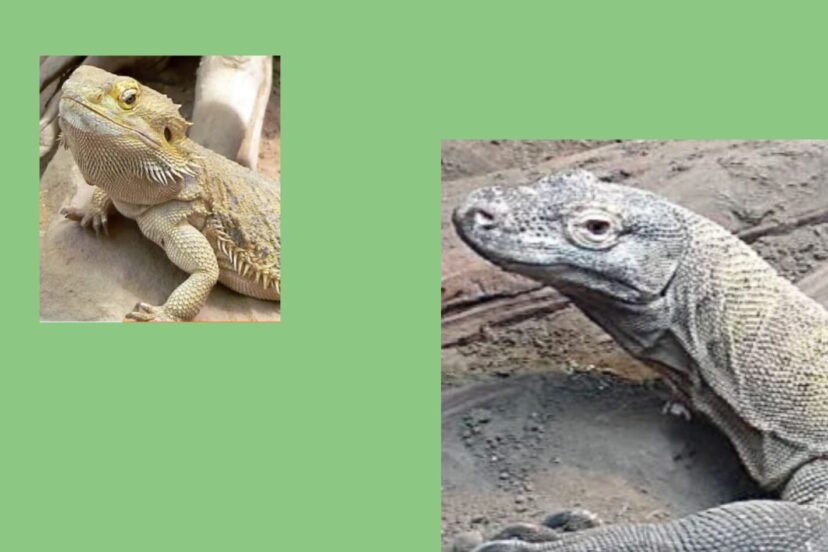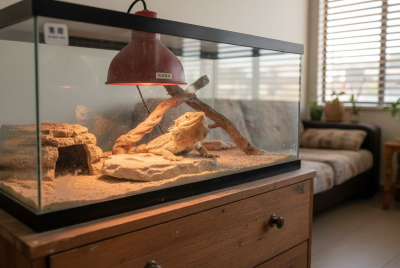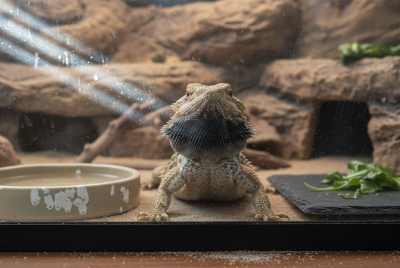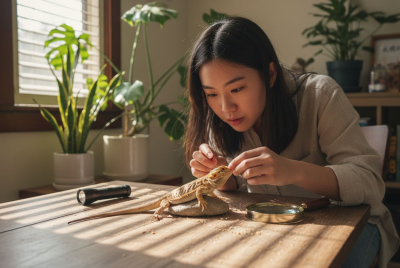Lizards and Dragons: A Guide to Reptile Companions
Introduction to Lizards and Dragons as Pets
If you’re someone who loves unique, fascinating creatures, reptiles might just be the ideal pets for you. Unlike traditional pets, reptiles have a certain mystique about them that can be intriguing to observe and interact with. From graceful geckos to majestic bearded dragons, there’s a wide range of lizards and dragons that can make wonderful companions if given proper care. In this article, I’ll walk you through some of the most popular lizard and dragon species, and how to care for them.
Why Choose a Reptile Companion?
Benefits of Owning a Reptile
Reptiles are unique pets that don’t require as much constant attention as other animals, making them great for people with busier schedules. Many are low-maintenance in terms of grooming, and most reptiles, like bearded dragons and geckos, don’t require daily walks. Additionally, watching their behaviors and unique routines can be endlessly fascinating!
Things to Consider Before Getting a Reptile
That said, reptiles do have specific needs that potential owners need to be prepared for. They may require a specialized diet, a certain range of temperatures, and specific humidity levels to thrive. It’s essential to understand these needs beforehand to ensure a happy, healthy pet.
Different Types of Pet Lizards
There’s a fantastic variety of pet lizards, each with unique characteristics and care needs. Here are some of the most popular species that are suitable for beginner and intermediate reptile enthusiasts.
Bearded Dragons
Ideal Habitat and Care Tips for Bearded Dragons
Bearded dragons are one of the most popular pet reptiles due to their docile nature and ease of care. They thrive in environments with plenty of space and need a basking spot with temperatures of around 95–105°F. Their diet mainly consists of leafy greens, vegetables, and insects like crickets or mealworms.
Leopard Geckos
Ideal Habitat and Care Tips for Leopard Geckos
Leopard geckos are small, hardy, and generally easy to care for, making them perfect for beginners. They do well in small enclosures with a warm side (88–92°F) and a cool side for temperature regulation. They’re insectivores, so you’ll be feeding them crickets, mealworms, or special gecko diet mixes.
Crested Geckos
Ideal Habitat and Care Tips for Crested Geckos
Known for their “eyelash” appearance and ability to climb, crested geckos make excellent pets. They prefer vertical space and temperatures around 70–80°F. Unlike some reptiles, crested geckos eat mostly fruit-based diets with some protein, like insects.
Blue-Tongued Skinks
Ideal Habitat and Care Tips for Blue-Tongued Skinks
Blue-tongued skinks are gentle lizards with unique blue tongues. They require a relatively spacious tank, temperatures ranging from 75°F (cool side) to 95°F (basking area), and a diet of veggies, fruit, and protein-rich sources like boiled eggs or insects.
Choosing the Right Lizard for Your Lifestyle
Lizard Size and Habitat Requirements
Choosing a lizard involves considering the amount of space you can dedicate to its enclosure, as some species require larger tanks than others. Bearded dragons, for example, need a lot of room to move around, whereas leopard geckos are more compact and can do well in smaller setups.
Diet and Feeding Needs
Each lizard species has its dietary preferences, so it’s essential to ensure that you can provide what they need. Some, like bearded dragons, need both insects and vegetables, while others, like leopard geckos, are strictly insectivores.
Understanding Dragon Species as Pets
Water Dragons
Water dragons are stunning creatures that love to swim and bask. They need a larger habitat with a water feature and temperatures that range from 75–85°F. Their diet consists of insects, small fish, and sometimes small rodents. They’re great for intermediate to advanced reptile keepers.
Komodo Dragons (Not Suitable for Beginners)
While impressive, Komodo dragons are not feasible as pets due to their massive size, strength, and specialized needs. They require an expert handler and are best appreciated in the wild or professional habitats.
Essential Tips for Reptile Care
Setting Up the Perfect Habitat
The ideal habitat setup varies by species, but generally, you’ll need a good-sized tank with adequate temperature controls, safe bedding, and hiding spots for your reptile to feel secure.
Temperature and Lighting Requirements
Proper lighting is crucial for reptiles as it helps them regulate their body temperature and supports their metabolic functions. Use UVB lighting for lizards like bearded dragons, and ensure a warm basking area to keep them healthy and active.
Handling and Bonding with Your Reptile
Patience is key when handling reptiles, as they can be skittish at first. Gently introduce yourself by hand-feeding them or letting them explore your hand. Over time, they can become more comfortable and may even enjoy occasional handling.
Welcoming a Lizard or Dragon into Your Life
Embracing a lizard or dragon as a pet can be incredibly rewarding. These fascinating animals bring a slice of the wild into your home and, with the right care, can thrive and develop a unique bond with you. Remember, each species has different needs, so research thoroughly and make sure you’re ready for the commitment. With the right care, your reptilian friend can be a delightful companion for years to come.
FAQs
1. What is the best reptile for beginners?
Leopard geckos and bearded dragons are often recommended for beginners because of their manageable size and relatively simple care needs.
2. Do reptiles recognize their owners?
Some reptiles, especially those handled frequently, can become accustomed to their owners and may show familiarity.
3. How often should I clean a reptile enclosure?
It’s a good practice to spot-clean daily and do a thorough cleaning of the enclosure every 2-4 weeks.
4. Are reptiles expensive to care for?
Initial setup costs can be high due to tank, lighting, and heating needs, but ongoing care costs vary depending on the species.
5. Can reptiles be housed together?
Most reptiles are solitary and should be housed alone to prevent stress or aggression. However, some species like certain geckos may tolerate being with others of the same species.




